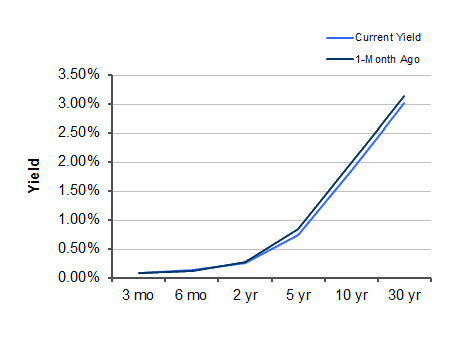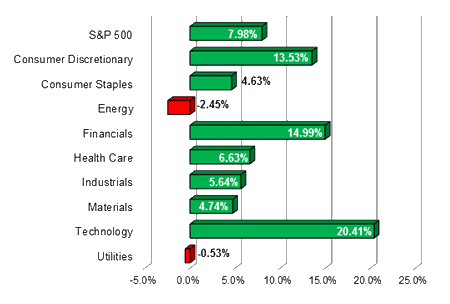
Market Commentary by Scott J. Brown, Ph.D., Chief Economist

Europe, again. Election results in France and Greece were not a surprise, but they added to concerns about the European crisis. The important aspect, for U.S. investors, is the uncertainty. Nobody knows exactly what will happen in Europe, but few doubt that the situation will be resolved anytime soon.
The second bailout agreement for Greece was only a few months ago, but at the time many felt that Greece would never be able to live up to the requirements.
Elsewhere in Europe, there has been some backsliding on austerity. Tighter budgets have weakened the troubled economies in Europe and have done nothing to resolve financial difficulties. Austerity is needed in the long term, but what’s needed in the short term is economic growth.
The economic calendar was thin. The trade deficit widened more than most analysts expected, but figures were only slightly wider than what was assumed in the advance GDP report.
Jobless claims appear to have settled down (at nearly the same pace as in March) after seasonal adjustment quirks lifted the figures in the first three weeks of April. Consumer sentiment improved in the mid-May assessment.
Next week, Europe is expected to be an ongoing concern for U.S. investors, but the arrival of mid-month economic data will provide a distraction. The focus is likely to be on the retail sales and residential construction reports. April’s retail sales are likely to have been moderate. April building permits and housing starts are expected to reflect an unwinding of the multi-family noise from March (single-family construction appears to have turned the corner, but a full recovery in housing is years away). The FOMC policy meeting minutes could include some market-moving quotes.
Indices
| Last | Last Week | YTD return % | |
| DJIA | 12855.04 | 13206.59 | 5.22% |
| NASDAQ | 2933.64 | 3024.30 | 12.61% |
| S&P 500 | 1357.99 | 1391.57 | 7.98% |
| MSCI EAFE | 1446.19 | 1503.67 | 2.38% |
| Russell 2000 | 791.75 | 806.59 | 6.86% |
Consumer Money Rates
| Last | 1-year ago | |
| Prime Rate | 3.25 | 3.25 |
| Fed Funds | 0.16 | 0.08 |
| 30-year mortgage | 3.78 | 4.59 |
Currencies
| Last | 1-year ago | |
| Dollars per British Pound | 1.616 | 1.633 |
| Dollars per Euro | 1.296 | 1.436 |
| Japanese Yen per Dollar | 79.960 | 80.720 |
| Canadian Dollars per Dollar | 1.000 | 0.961 |
| Mexican Peso per Dollar | 13.446 | 11.593 |
Commodities
| Last | 1-year ago | |
| Crude Oil | 97.08 | 103.88 |
| Gold | 1596.25 | 1516.05 |
Bond Rates
| Last | 1-month ago | |
| 2-year treasury | 0.26 | 0.27 |
| 10-year treasury | 1.85 | 1.99 |
| 10-year municipal (TEY) | 1.76 | 1.97 |
Treasury Yield Curve – 5/11/2012
S&P Sector Performance (YTD) – 5/11/2012
Economic Calendar
| May 15th |
— |
Consumer Price Index (April) Retail Sales (April) Empire State Manufacturing Index (May) Business Inventories (March) Homebuilder Sentiment (May) |
| May 16th |
— |
Building Permits, Housing Starts (April) Industrial Production (April) FOMC Minutes (April 24-25) |
| May 17th |
— |
Jobless Claims (week ending May 12th) Philadelphia Fed Index (May) Leading Economic Indicators (April) |
| May 22nd |
— |
Existing Home Sales (April) |
| May 23rd |
— |
New Home Sales (April) |
| May 24th |
— |
Durable Goods Orders (April) |
| May 28th |
— |
Memorial Day Holiday (markets closed) |
| June 1st |
— |
Employment Report (May) |
| June 20th |
— |
FOMC Policy Decision Bernanke Press Briefing |
Important Disclosures
US government bonds and treasury bills are guaranteed by the US government and, if held to maturity, offer a fixed rate of return and guaranteed principal value. US government bonds are issued and guaranteed as to the timely payment of principal and interest by the federal government. Treasury bills are certificates reflecting short-term (less than one year) obligations of the US government.
Commodities trading is generally considered speculative because of the significant potential for investment loss. Markets for commodities are likely to be volatile and there may be sharp price fluctuations even during periods when prices overall are rising. Specific sector investing can be subject to different and greater risks than more diversified investments.
Tax Equiv Muni yields (TEY) assume a 35% tax rate on triple-A rated, tax-exempt insured revenue bonds.
![]() Material prepared by Raymond James for use by its financial advisors.
Material prepared by Raymond James for use by its financial advisors.
The information contained herein has been obtained from sources considered reliable, but we do not guarantee that the foregoing material is accurate or complete. Data source: Bloomberg, as of close of business April 26th, 2012.
©2012 Raymond James Financial Services, Inc. member FINRA / SIPC.




